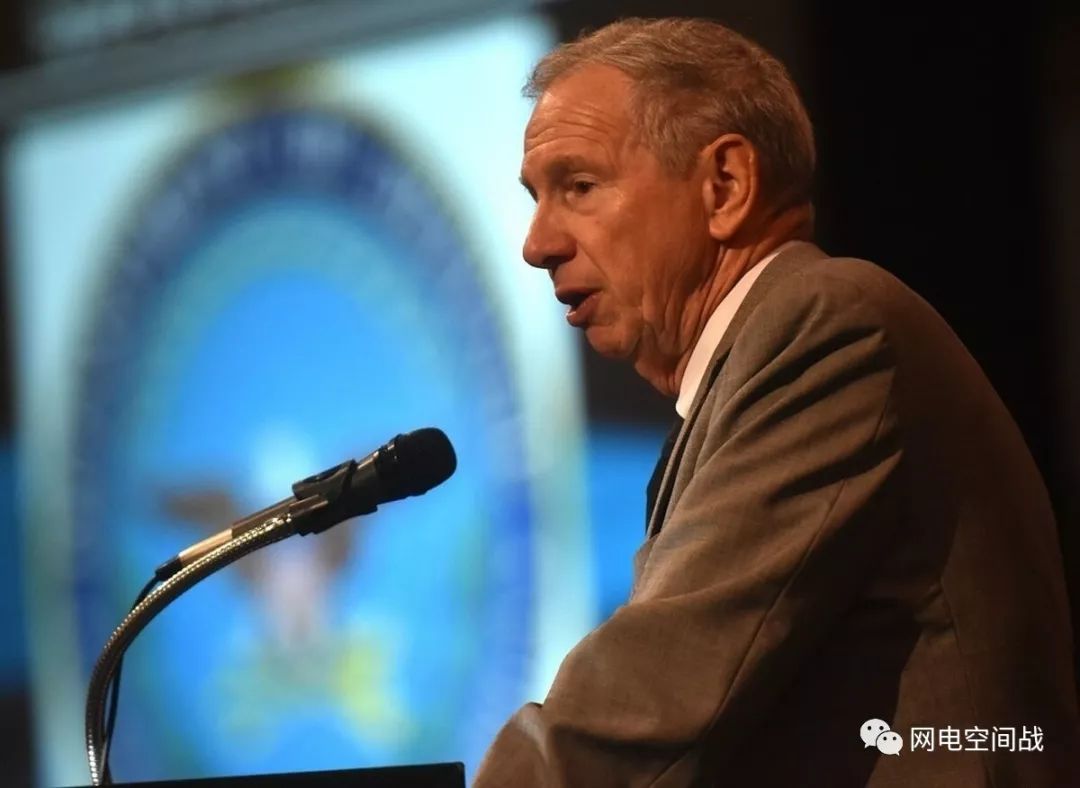作者: Aaron Mehta

我们正在努力成为电信狗尾巴上的跳蚤,”国防部副部长Mike Griffin说。(布莱恩培根/美国陆军)
五角大楼可能会将其基础设施作为美国5G技术开发的测试场地,以帮助启动目前由中国主导的第五代网络技术的国内能力。
美国国防部负责技术的副部长迈克·格里芬周二在哈德逊研究所发表讲话时重申,超音速已经被5G取代,成为他的第一要务。但他也承认,五角大楼将永远不会成为5G技术的驱动力,并表示:“我们意识到,电信领域的商业举措远远超过了我们能够做到的,并希望在国防部做什么。”
“我们正在努力成为电信狗尾巴上的跳蚤,”他说。“那就是说,我们有国家安全需求。在某种程度上,我们可以帮助培养竞争环境,或者鼓励它在与我们相关的方向上成长,我们希望这样做。“
作为一个如何运作的例子,格里芬指出,五角大楼有“用例”与商业世界探讨的那些,例如“智能港口,智能机场,智能仓库,智能工厂 - 所有这些东西有商业应用,但他们绝对有国家安全的含义。“
“如果我们能够在环境中提供我们的基础设施进行实验和原型设计,那么不同的竞争对手可以在不同的领域工作,并确保他们的专有信息受到保护,如果我们能够提供不需要本地、区域、州许可的场所,由于他们在国防部基地运营,因此所有这些都可以加速5G开发的进展,“格里芬说。“发展不会由国防部领导。我们将期待成为优秀的客户。如果我们可以帮助实现这一点,我会想做到这一点。“
格里芬的副手Lisa Porter被任命为5G事务的部门主管。但格里芬正在努力为这项任务添加另一个机构,以一个新的助理主管的形式。(他的办公室包括一些助理主管,涉及超音速和人工智能等主题。)在活动期间,格里芬表示希望尽快加入这一角色。
在此次活动的后期,一名观众提出了5G易受微波武器攻击的担忧,并询问格里芬如何最好地对抗它。格里芬承认某些漏洞将永远存在,但表示最终“我们将不得不学习如何应对它”。
“国家安全界必须去人们不想要我们去的地方,我们必须做他们不希望我们做的事情,否则我们将无法建立自己的网络,”他说。“因此,作为一个起点,国家安全界必须接受我们必须能够在一个环境中运作 - 我们并不怀疑它不值得信赖,我们知道它不值得信赖。这是我们的基本规则之一。
原文:
Pentagon could offer up its bases as 5G test beds
By: Aaron Mehta 4 hours ago
“We are struggling to become the flea on the tail of the telecom’s dog,” says the undersecretary of defense for research and engineering, Mike Griffin. (Bryan Bacon/U.S. Army)
The Pentagon might offer its infrastructure as test areas for American 5G technology development, in an attempt to help jump-start domestic capabilities in fifth-generation network technology currently dominated by China.
Speaking at the Hudson Institute on Tuesday, Department of Defense tech chief Mike Griffin reiterated that hypersonics had been replaced by 5G as his No. 1 priority. But he also acknowledged that the Pentagon will never be the driving force in 5G technology, saying: “We are aware that commercial initiatives in telecommunications far outstrip anything that we can do and would want to do at DoD.”
“We are struggling to become the flea on the tail of the telecom’s dog,” he said. “That said, we have national security needs. And to the extent that we can help seed the competitive environment, or encourage it to grow in directions that are relevant to us, we want to do that.”
As an example of how that might work, Griffin noted there are “use cases” for the Pentagon that line up with those explored by the commercial world, such as “smart ports, smart airports, smart depots, smart factories — all of those things have commercial applications, but they absolutely have national security operations.”
“If we can make available our infrastructure for experimenting and prototyping in environments, [where] different competitors can work in different areas and be assured their proprietary information is protected, if we can provide venues where local, regional, state permitting is not required for operating because they are operating on a DoD base — all of those things can really speed progress in 5G development,” Griffin said. “The development will not be led by DoD. We will be looking to be good customers. If we can help enable that at all, I would want to do that.”
Griffin’s deputy, Lisa Porter, has been assigned as the department’s point person on 5G issues. But Griffin is working to add another body to the task, in the form of a new assistant director on the subject. (His office contains a number of assistant directors in subject matters such as hypersonics and artificial intelligence.) During the event, Griffin said he hoped to add that role soon.
Later in the event, an audience member raised the concern that 5G would be vulnerable to microwave weaponry, asking Griffin how to best combat that. Griffin acknowledged that certain vulnerabilities will always exist, but said that ultimately “we’re just going to have to learn how to deal with it.”
“The national security community has to go places where people don’t want us and we have to do things they don’t want us to do, and we won’t be able to bring our own networks,” he said. “So the national security community has to accept, as a starting proposition, that we have to be able to operate in an environment — it’s not that we suspect it’s not trustworthy, we know it’s not trustworthy. That’s one of our ground rules.
“Some of this is a math problem — how do you assure yourself of trusted communications, broadly speaking, in untrusted networks, untrusted hardware?”
声明:本文来自网电空间战,版权归作者所有。文章内容仅代表作者独立观点,不代表安全内参立场,转载目的在于传递更多信息。如有侵权,请联系 anquanneican@163.com。
